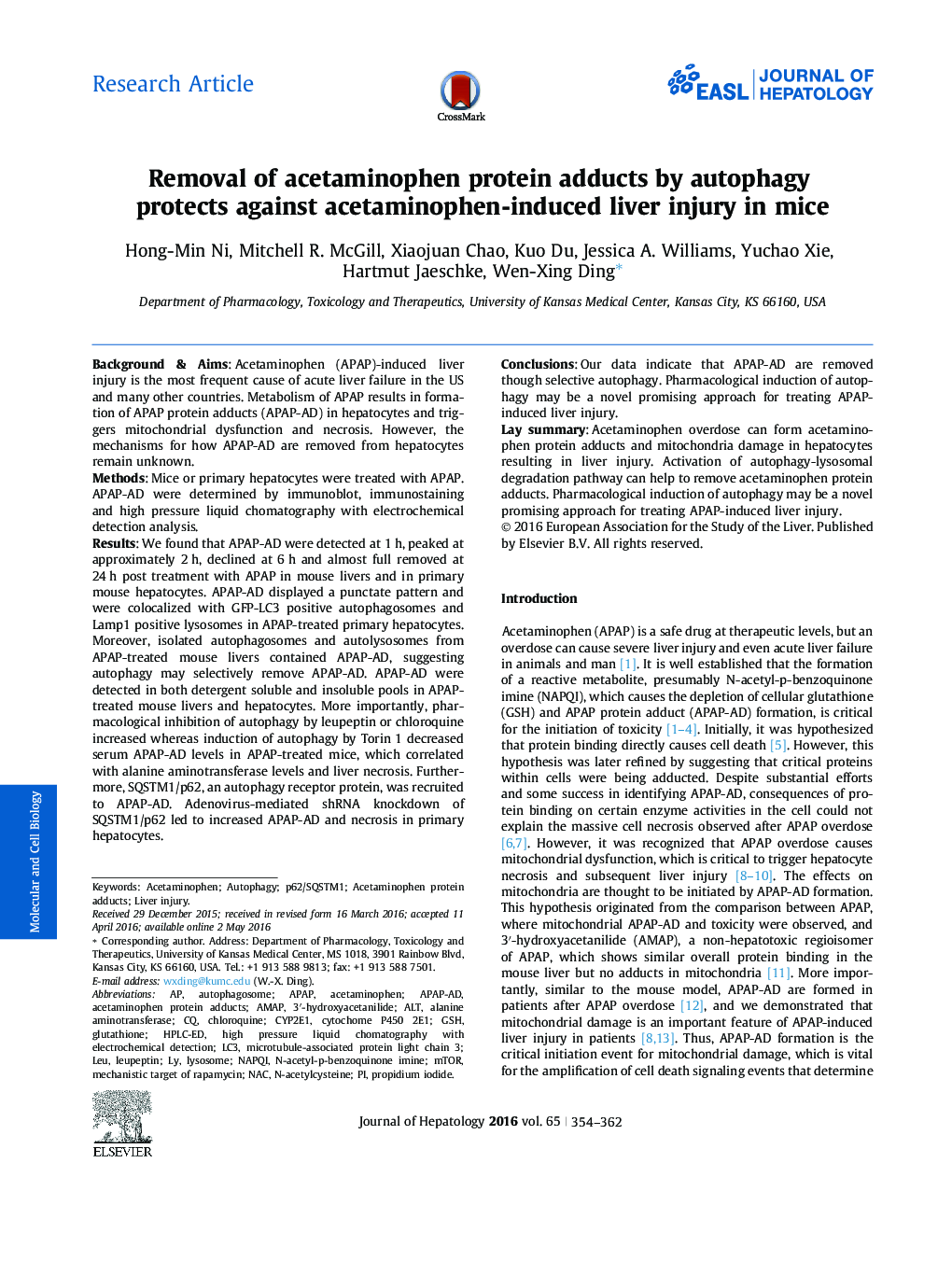| کد مقاله | کد نشریه | سال انتشار | مقاله انگلیسی | نسخه تمام متن |
|---|---|---|---|---|
| 3313574 | 1211103 | 2016 | 9 صفحه PDF | دانلود رایگان |
Background & AimsAcetaminophen (APAP)-induced liver injury is the most frequent cause of acute liver failure in the US and many other countries. Metabolism of APAP results in formation of APAP protein adducts (APAP-AD) in hepatocytes and triggers mitochondrial dysfunction and necrosis. However, the mechanisms for how APAP-AD are removed from hepatocytes remain unknown.MethodsMice or primary hepatocytes were treated with APAP. APAP-AD were determined by immunoblot, immunostaining and high pressure liquid chomatography with electrochemical detection analysis.ResultsWe found that APAP-AD were detected at 1 h, peaked at approximately 2 h, declined at 6 h and almost full removed at 24 h post treatment with APAP in mouse livers and in primary mouse hepatocytes. APAP-AD displayed a punctate pattern and were colocalized with GFP-LC3 positive autophagosomes and Lamp1 positive lysosomes in APAP-treated primary hepatocytes. Moreover, isolated autophagosomes and autolysosomes from APAP-treated mouse livers contained APAP-AD, suggesting autophagy may selectively remove APAP-AD. APAP-AD were detected in both detergent soluble and insoluble pools in APAP-treated mouse livers and hepatocytes. More importantly, pharmacological inhibition of autophagy by leupeptin or chloroquine increased whereas induction of autophagy by Torin 1 decreased serum APAP-AD levels in APAP-treated mice, which correlated with alanine aminotransferase levels and liver necrosis. Furthermore, SQSTM1/p62, an autophagy receptor protein, was recruited to APAP-AD. Adenovirus-mediated shRNA knockdown of SQSTM1/p62 led to increased APAP-AD and necrosis in primary hepatocytes.ConclusionsOur data indicate that APAP-AD are removed though selective autophagy. Pharmacological induction of autophagy may be a novel promising approach for treating APAP-induced liver injury.Lay summaryAcetaminophen overdose can form acetaminophen protein adducts and mitochondria damage in hepatocytes resulting in liver injury. Activation of autophagy-lysosomal degradation pathway can help to remove acetaminophen protein adducts. Pharmacological induction of autophagy may be a novel promising approach for treating APAP-induced liver injury.
Figure optionsDownload high-quality image (85 K)Download as PowerPoint slide
Journal: Journal of Hepatology - Volume 65, Issue 2, August 2016, Pages 354–362
